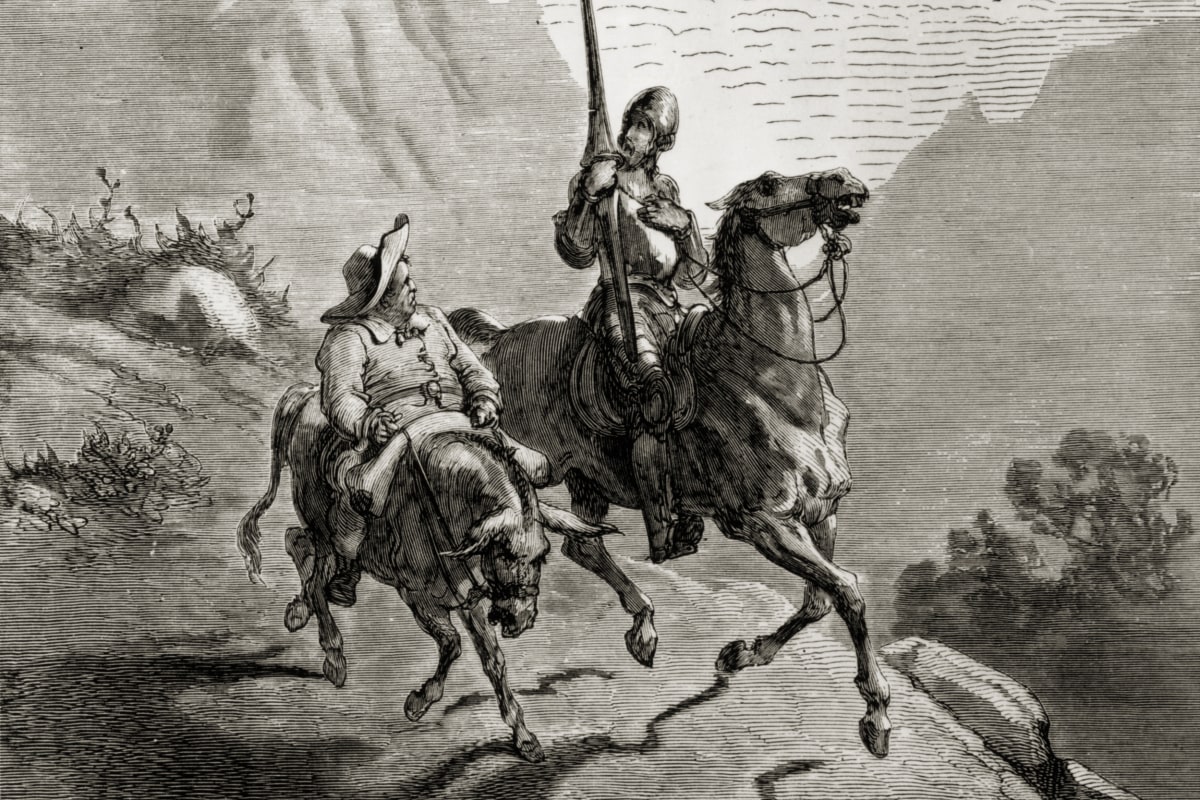
The Secret Garden is a novel by Frances Hodgson Burnett. It was initially published in serial form beginning in 1910, and first published in its entirety in 1911. It is now one of Burnett's most popular novels, and considered a classic of English children's literature. Several stage and film adaptations have been made.
Frances Hodgson Burnett.

Frances Eliza Hodgson Burnett (24 November 1849 – 29 October 1924) was an English-American novelist and playwright. She is best known for the three children's novels Little Lord Fauntleroy (published in 1885–1886), A Little Princess (1905), and The Secret Garden (1911).
Frances Eliza Hodgson was born in Cheetham, England. After her father died in 1852, the family fell on straitened circumstances and in 1865 immigrated to the United States, settling near Knoxville, Tennessee. There Frances began writing to help earn money for the family, publishing stories in magazines from the age of 19. In 1870, her mother died, and in 1872 Frances married Swan Burnett, who became a medical doctor. The Burnetts lived for two years in Paris, where their two sons were born, before returning to the United States to live in Washington, D.C., Burnett then began to write novels, the first of which (That Lass o' Lowrie's), was published to good reviews. Little Lord Fauntleroy was published in 1886 and made her a popular writer of children's fiction, although her romantic adult novels written in the 1890s were also popular. She wrote and helped to produce stage versions of Little Lord Fauntleroy and A Little Princess.
Confirmation.

In Christianity, Confirmation is seen as the sealing of the covenant created in Holy Baptism. In some denominations, Confirmation also bestows full membership in a local congregation upon the recipient. In others, such as the Roman Catholic Church, Confirmation "renders the bond with the Church more perfect",[1] because, while a baptized person is already a member,[2] "reception of the sacrament of Confirmation is necessary for the completion of baptismal grace".[3]
Roman Catholics, Eastern Orthodox, Oriental Orthodox Churches, and many Anglicans view Confirmation as a sacrament. In the East it is conferred immediately after baptism. In the West, this practice is followed when adults are baptized, but in the case of infants not in danger of death it is administered, ordinarily by a bishop, only when the child reaches the age of reason or early adolescence. Among those Catholics who practice teen-aged Confirmation, the practice may be perceived, secondarily, as a "coming of age" rite.
Eastern Orthodox.

The Eastern Orthodox Church,[1] also known as the Orthodox Church,[2] or officially as the Orthodox Catholic Church,[3] is the second largest Christian church[4] and one of the oldest current religious institutions in the world.[5] The Eastern Orthodox Church teaches that it is the One, Holy, Catholic and Apostolic Church established by Jesus Christ in his Great Commission to the apostles.[6]It practices what it understands to be the original Christian faith and maintains the sacred tradition passed down from the apostles.
The Eastern Orthodox Church is a communion of autocephalous churches,[2] each typically governed by a Holy Synod. It teaches that all bishops are equal by virtue of their ordination, and has no central governing structure analogous to the Papacy in the Roman Catholic Church. The contemporary Orthodox Church had shared communion with the Roman Catholic Church until the East–West Schism starting around AD 1054, which had been triggered by disputes over doctrine, especially the authority of the Pope. The Patriarchs of the East (see Pentarchy) agreed on the special status of the Holy See, but not on the right of the Pope to interfere in their territorial jurisdiction. Prior to the Council of Chalcedon in AD 451, the Eastern Orthodox had also shared communion with the Oriental Orthodox churches, separating primarily over differences in Christology.
Graduation.

Graduation is getting a diploma or academic degree or the ceremony that is sometimes associated, in which students become graduates. Before the graduation, candidates are referred to as graduands. The date of graduation is often called graduation day. The graduation ceremony itself is also called commencement, convocation or invocation. In the United States and Canada, the term is additionally increasingly being used to refer to the advancement from a primary or secondary school level. When ceremonies are associated, they usually include a procession of the academic staff and candidates and a valediction. At the college and university level the faculty will usually wear academic dress at the formal ceremonies, as will the trustees and degree candidates.
Recruit Training.

Recruit training, more commonly known as basic training and colloquially called boot camp, is the initial instruction given to new military personnel, enlisted and officer. After completion of basic training, new recruits undergo Advanced Individual Training (AIT), where they learn the skills needed for their military jobs. Officer trainees undergo more detailed programs that may either precede or follow the common recruit training in an officer training academy (which may also offer a civilian degree program simultaneously) or in special classes at a civilian university. During recruit training, drill instructors do everything possible to push a recruit to his or her physical and mental limits.
Cholera.


Cholera is an infection of the small intestine by some strains of the bacterium Vibrio cholerae.[1] Symptoms may range from none, to mild, to severe.[2] The classic symptom is large amounts of watery diarrhea that lasts a few days.[3] Vomiting and muscle cramps may also occur.[2] Diarrhea can be so severe that it leads within hours to severe dehydration and electrolyte imbalance.[3] This may result in sunken eyes, cold skin, decreased skin elasticity, and wrinkling of the hands and feet.[4] The dehydration may result in the skin turning bluish.[5] Symptoms start two hours to five days after exposure.
Niagara Falls.

Niagara Falls (/naɪˈæɡrə/) is the collective name for three waterfalls that straddle the international border between Canada and the United States; more specifically, between the province of Ontario and the state of New York. They form the southern end of the Niagara Gorge.
From largest to smallest, the three waterfalls are the Horseshoe Falls, the American Falls and the Bridal Veil Falls. The Horseshoe Falls lie mostly on the Canadian side and the American Falls entirely on the American side, separated by Goat Island. The smaller Bridal Veil Falls are also on the American side, separated from the other waterfalls by Luna Island. The international boundary line was originally drawn through Horseshoe Falls in 1819, but the boundary has long been in dispute due to natural erosion and construction.
Young Adult Fiction.

Young adult fiction or young adult literature (YA)[1] is fiction published for readers from 12 to 18.[2] However, authors and readers of "young teen novels" often define it as written for those aged 15 to the early 20s.[3] The terms young adult novel, juvenile novel, teenage fiction, young adult book, etc. refer to the works in this category.[4]
The subject matter and story lines of young adult literature are typically consistent with the age and experience of the main character, but this literature spans the spectrum of fiction genres. Stories that focus on the specific challenges of youth are sometimes referred to as problem novels or coming-of-age novels.[5] According to 2013 statistics by the speculative fiction publisher Tor Books, women outnumbered men by 68% to 32% among submissions of this type of fiction to publishers, a gender distribution converse to that observed, for example in adult science fiction and most fantasy fiction.
Don Quixote.

Don Quixote (/ˌdɒn kiːˈhoʊti/ or /ˌdɒn ˈkwɪksoʊt/;[1] Spanish: [doŋ kiˈxote] ( listen), formerly [doŋ kiˈʃote]),[citation needed] fully titled The Ingenious Gentleman Don Quixote of La Mancha (Spanish: El ingenioso hidalgo don Quijote de la Mancha [el iŋxeˈnjoso iˈðalɣo ðoŋ kiˈxote ðe la ˈmantʃa]), is a Spanish novel by Miguel de Cervantes Saavedra. Published in two volumes, in 1605 and 1615, Don Quixote is considered the most influential work of literature from the Spanish Golden Age and the entire Spanish literary canon. As a founding work of modern Western literature and one of the earliest canonical novels, it regularly appears high on lists of the greatest works of fiction ever published, such as the Bokklubben World Library collection that cites Don Quixote as authors' choice for the "best literary work ever written".
listen), formerly [doŋ kiˈʃote]),[citation needed] fully titled The Ingenious Gentleman Don Quixote of La Mancha (Spanish: El ingenioso hidalgo don Quijote de la Mancha [el iŋxeˈnjoso iˈðalɣo ðoŋ kiˈxote ðe la ˈmantʃa]), is a Spanish novel by Miguel de Cervantes Saavedra. Published in two volumes, in 1605 and 1615, Don Quixote is considered the most influential work of literature from the Spanish Golden Age and the entire Spanish literary canon. As a founding work of modern Western literature and one of the earliest canonical novels, it regularly appears high on lists of the greatest works of fiction ever published, such as the Bokklubben World Library collection that cites Don Quixote as authors' choice for the "best literary work ever written".
Picaresque Novel.

The picaresque novel (Spanish: "picaresca," from "pícaro," for "rogue" or "rascal") is a genre of prose fiction that depicts the adventures of a roguish hero/heroine of low social class who lives by his or her wits in a corrupt society. Picaresque novels typically adopt a realistic style, with elements of comedy and satire. This style of novel originated in 16th-century Spain and flourished throughout Europe in the 17th and 18th centuries. It continues to influence modern literature.
According to the traditional view of Thrall and Hibbard (first published in 1936), seven qualities distinguish the picaresque novel or narrative form, all or some of which an author may employ for effect.
Sancho Panza.

Sancho Panza [ˈsantʃo ˈpanθa] is a fictional character in the novel Don Quixote written by Spanish author Don Miguel de Cervantes Saavedra in 1605. Sancho acts as squire to Don Quixote, and provides comments throughout the novel, known as sanchismos, that are a combination of broad humour, ironic Spanish proverbs, and earthy wit. "Panza" in Spanish means "belly" (cf. English "paunch," Italian "pancia", several Italian dialects "panza", Portuguese "pança", French "panse").
沒有留言:
張貼留言